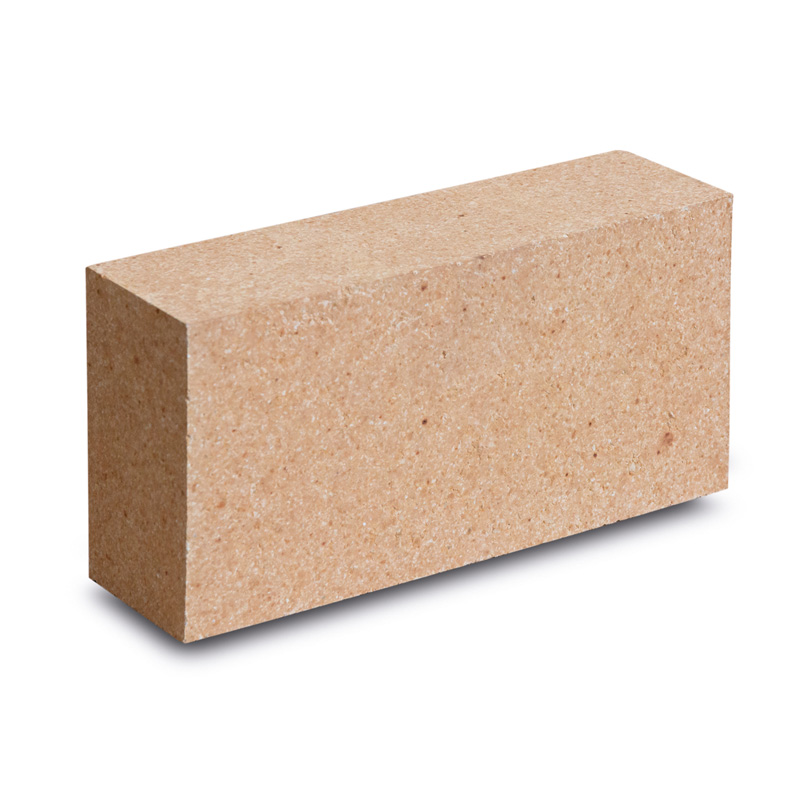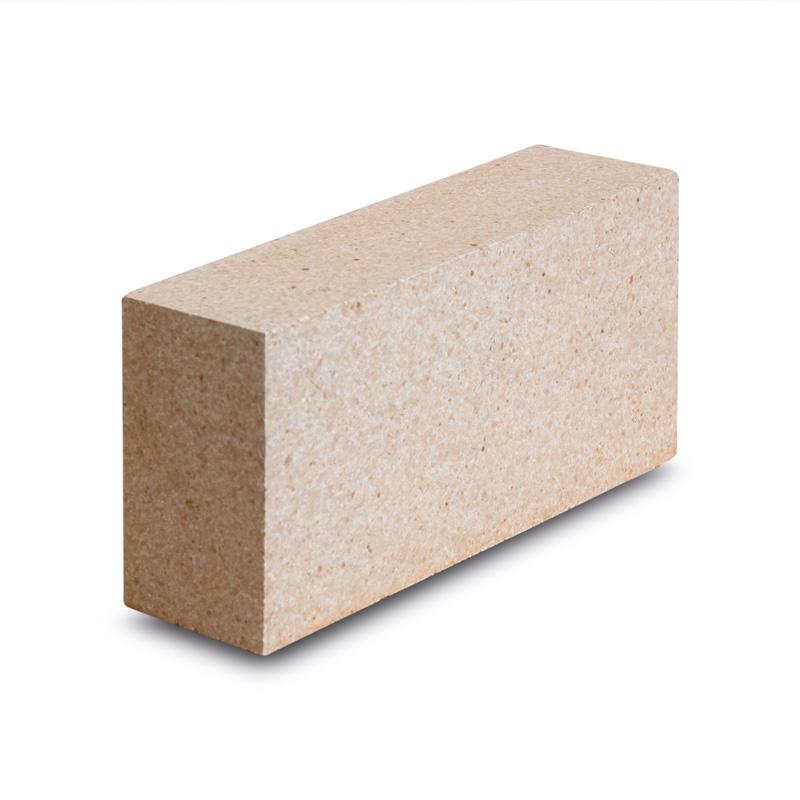
The refractoriness of clay bricks is comparable to that of silica bricks, up to 1690~1730℃, but the softening temperature under load is more than 200℃ lower than that of silica bricks. Because in addition to the high refractory mullite crystal, the clay brick also contains nearly half of the low melting point amorphous glass phase.
Introduction of fire clay bricks:
Fire clay bricks are a common type of refractory bricks, also known as fired bricks. It refers to clay products made of aluminum silicate materials with alumina content of 30% to 40%. Clay bricks are composed of 50% soft clay and 50% hard clay clinker according to certain particle size requirements. After molding and drying, it is fired at 1300~1400°C. The raw materials of clay bricks are clay, shale, coal gangue and other powders, and the mineral components are mainly kaolinite (Al2O32SiO2 2H2O) and 6%~7% impurities (oxides of potassium, sodium, calcium, titanium and iron) .
The refractoriness of fire clay bricks is comparable to that of silica bricks, up to 1690~1730℃, but the softening temperature under load is more than 200℃ lower than that of silica bricks. Because in addition to the mullite crystals with high refractoriness, the clay bricks also contain nearly half of the low melting point amorphous glass phase.
Features of fire clay bricks:
Fire clay bricks are shaped refractory materials, weak acid refractory products, which can resist the erosion of acid slag and acid gas, and have slightly poor resistance to alkaline substances. Clay bricks have good thermal properties and are resistant to rapid cooling and rapid heating.
Picture of fire clay bricks:

Uses of fire clay bricks:
1. fire clay bricks for hot blast stoves are clay bricks made from refractory clay and used to build blast furnace hot blast stoves. fire clay bricks for hot blast stoves are used in hot blast stoves, regenerators and partition walls. fire clay bricks for hot blast stoves require good thermal shock resistance, high softening temperature under load and small creep.
2. Large-scale fire clay bricks for glass kilns are clay refractory bricks with a single weight of not less than 50kg used for masonry glass kilns. China Metallurgical Standard (YB/T 5108-1993) stipulates the physical and chemical indicators, allowable deviation of dimensions and appearance of large clay refractory bricks for glass kilns.
Fire clay bricks can only be used for secondary parts of coke ovens, such as regenerator sealing walls, small flue lining bricks and regenerator checker bricks, furnace door lining bricks, furnace roof and rising pipe lining bricks.
Physical and chemical indicators of fire clay bricks for blast furnace:
|
project |
Index |
|
|
ZGN-42 |
GN-42 |
|
|
Al2O3%≥ |
42 |
42 |
|
Fe2O3%≤ |
1.6 |
1.7 |
|
Refractoriness℃≥ |
1760 |
1760 |
|
0.2MPa softening temperature under load℃RUL≥ |
1450 |
1430 |
|
Reburn line changes%PLC/1450℃,3h |
+0 -0.2 |
+0 -0.3 |
|
Apparent porosity%≤AP |
15 |
16 |
|
Normal temperature compressive strength MPa≥CCS |
53.0 |
42.0 |
Fireclay bricks are classified as weak acid refractories. Due to the large fluctuation range of chemical composition, different production methods, and differences in firing temperature, the properties of clay bricks change greatly.We can produce all kinds of Fireclay bricks according to customers' requirements
Fireclay bricksis suitable for supporting hot blast stoves of large, medium and small blast furnaces
low porosity clay bricks are mainly used in the regenerators of glass kilns. They can also be used in blast furnaces and hot blast furnaces in the steel industry; cement kilns in the building materials industry; chemical kilns in the chemical industry as kiln linings
The Al2O3 content of clay heat Clay insulating refractory bricks is generally more than 40%, and the Fe2O3 content is less than 2.0-2.5%. The clinker in the ingredients is 65-85%, and the combined clay is 35-15%. The crushed bonded clay and the finely ground clinker are mixed and milled, and then mixed with the granular clinker to make semi-dry mud, high pressure molding, and sintering at about 1400 ℃, with good performance.
Ceramic wear resistant castable is a special material and is a new type of material developed recently. It not only meets the needs of national defense cutting-edge products and high-tech development, but also meets the requirements of the rapid development of the national economy. Therefore, it is easier for users to accept than other materials, so it develops rapidly.
The chemical composition of bauxite is mainly Al2O3, SiO2, Fe2O3, TO2, accounting for about 95% of the total composition, and the secondary components are CaO, MgO, K2O, Na20, S, MnO2 organic matter and trace components Ga, Ge, etc.
Fireclay bricks are classified as weak acid refractories. Due to the large fluctuation range of chemical composition, different production methods, and differences in firing temperature, the properties of clay bricks change greatly.We can produce all kinds of Fireclay bricks according to customers' requirements
Refractory wet mud used to block the iron outlet can be divided into two categories: water cannon mud and waterless gun mud. On large and medium -sized blast furnaces on high top pressure and high degree of smelting.



